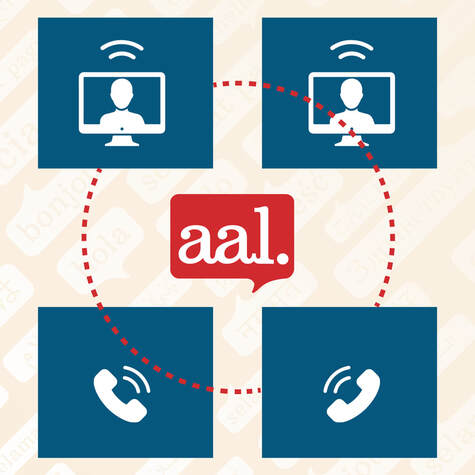|
By Patricia Jaworski One of the major roadblocks that many patients face when accessing health care are language barriers. Limited English proficiency (LEP) patients face challenges not only when making appointments, but in accurately describing their symptoms, and understanding the diagnosis, recommendations and treatment plan specified by medical professionals. Medical Interpreters can help, but they are not always provided by healthcare professionals, usually due to the cost. However, the failure to provide this service can result in serious medical mistakes. In this post we will examine three medical malpractice cases, and how the errors could have been avoided. Case 1: Willie Ramirez Just one word turned into one of the most expensive medical failures. On January 22nd, 1980, 18-year-old Willie Ramirez experienced a headache. Later that night, he reported feeling a sharp pain as if someone was stabbing the back of his head with a needle, lost his vision and stumbled into his girlfriend’s house. When he woke up, he was in hospital, post-surgery, and quadriplegic. Willie Ramirez arrived at the South Florida hospital in a comatose state. His Spanish speaking family explained that he was “intoxicado” – meaning they believed he was suffering with food poisoning. The ER doctors interpreted this as “intoxicated”- believing Willie had intentionally overdosed. Both parties believed that they were communicating effectively, and a Medical Interpreter was not called in. ‘Intoxicado’ and ‘intoxicated’ sound similar but have quite different meanings. Willie had not overdosed but had suffered from a brain hemorrhage that was not noticed until his conditioned worsened in the next 48 hours, but by then it was too late. Had an Interpreter been present, a neurosurgeon could have been called immediately and Willie would be able to walk today. Ramirez won a $71 million settlement as a result of the misdiagnosis. This case highlights why family members do not make the best interpreters. Case 2: The Tran Family In a 2010 report on malpractice, it was found of 1,373 claims, at least 35 were linked to failure to provide adequate language interpretation. One case highlighted in the report was that of a 9-year-old girl who presented to a Californian hospital with severe stomach ache. Her parents only spoke Vietnamese, so the girl and her 16-year-old brother tried to interpret. The staff diagnosed her with a stomach flu and sent them home with medication and instructions written in English. Later, the girl suffered from a reaction with the medication, had a heart attack and passed away. An Interpreter was never called, and the staff allowed two children to interpret medical issues, including the symptoms, diagnosis and treatment plan. The malpractice claim settled for $200,000. This case highlights that children are not equipped for interpreting. They lack the vocabulary and maturity for the role. Case 3: The Teresa Tarry Case Teresa Tarry relocated from Britain to Spain with her two sons following her divorce. While being half Spanish herself, Teresa spoke little Spanish. When she found a lump on her breast, she visited her doctor who assured her it was fine. When it grew rapidly, she went back to have it checked again. A translation error in her files made doctors believe that Teresa’s mother and sister had both had breast cancer, and so recommended pre-emptive surgery with a double mastectomy. As it turned out, there was no history of cancer in her family, making the procedure unnecessary. Teresa claims that she was scared and believed the surgeons when they said she had cancer deeming that surgery was necessary. She was assured that everything would be fine post surgery, however she suffered reduced mobility caused by the operation, and was deemed unfit for her job. She is now unable to work and gets by on incapacity benefits. She sued the hospital for €600,000 for negligence. This case highlights the need for an Interpreter to clarify medical history. Teresa’s surgery was unnecessary and could have been avoided. Connect with Remote Interpreting As demonstrated in the cases above, medical interpreting is a critical role in the presentation, diagnosis and treatment of patients, and can have permanent outcomes and high costs to patients and healthcare practices.
Of course, access to or waiting for onsite interpreters isn’t always possible. Fortunately over the phone (OPI) and video remote interpreting (VRI) make it possible for patients and healthcare professionals to easily gain access to Interpreters from wheverever they are. It is a fast and affordable alternative to onsite interpreting. All About Languages provides over the phone and video interpreting in addition to onsite services. Contact us today to learn more or book our services. Sources: Willie Ramirez https://www.healthaffairs.org/do/10.1377/hblog20081119.000463/full/ Tran Family https://nilservices.com/professional-medical-interpreter-part-2/ Teresa Tarry https://www.dailymail.co.uk/news/article-3257463/It-hard-look-touch-Devastated-British-ex-pat-mother-reveals-needless-double-mastectomy-translation-mix-Spain.html
0 Comments
By Patricia Jaworski Face to Face or Onsite Interpreters provide a more enriched form of communication where Telephone or Video Interpreting does not . As a general rule of thumb, the type of service requested should ideally match the type of meeting being scheduled. Hence if the Culturally or Linguistically Diverse (CALD) client is met or required in person, it’s best practice to book an Onsite Interpreter. With the development of technology and the impact of Covid-19 conducting business as usual has changed dramatically. The potenitial of video technology has markedly increased. Language companies are jumping on board with the technology and All About Languages has been prepared for such requests since May 2020. So what are the pros and cons of using each type of Interpreting Method? Onsite Interpreting (OSI) Pros – Onsite Interpreting provides the most enriched form of communication where all three parties are at the same location. Technology is not required; as communication is conducted in person. Verbal and non-verbal cues are easily identified, body language can give cues as to whether message has been understood. Cultural and/or language barriers can be identified quickly and resolved more efficiently than other forms of interpreting methods. Onsite Interpreting is more personable, and rapport can be easily developed especially when an Interpreter is required over multiple sessions. Onsite Interpreters are recommended for most situations however it ever so important to consider this form for circumstances involving business meetings, medical appointments, group meetings or court interpreting to name a few. Cons – A shortcoming to engaging an Onsite Interpreter is cost. Costs are higher as there is a minimum booked duration or fee and travel costs may apply. Secondly, particularly for some languages, an Onsite Interpreter may not always be available at the requested time or location. Video Remote Interpreting (VRI) Pros – It’s immediate. You can schedule a session quicker than waiting for an Onsite Interpreter to arrive if not pre-booked. Connection times are speedy. Video Interpreting is accessible to most and does not require huge bandwidths. Participants can be located across different sites. The technology All About Languages uses for Video Remote Interpreting is secure, which preserves confidentiality contingent on the environment. Users can connect via a web browser (no downloads required) or via a mobile application VRI can be more friendly on the budget, particularly where travel fees would normally be incurred for an Onsite Interpreter. It does not demand costly equipment to set up or conduct a session. VRI bridges the gap between Onsite and Telephone Interpreting. Cons – not always ideal in certain situations where there are several people (more than 5) involved in the session. Technical issues may arise if hardware is not tested beforehand. Over the Phone Interpreting (OPI) Pros – Often the most cost effective and fastest option when sessions are usually shorter than other forms of Interpreting. Ideally, Telephone Interpreting is best for interactions which are straightforward or succinct. Telephone Interpreters are often the most accessible 24 hours a day, 7 days a week. Cons Communication is limited to verbal communication only. Language or communication barriers may not easily be identified when communication is not clear or understood. Indeed, Telephone Interpreting is not a suitable option for those heard of hearing or the hearing impaired. By Patricia Jaworski The Challenges Interpreters Face Interpreting is one of the main components of language services, but with that comes many challenges. Whether the interpreting is done over the phone, via video or in-person and if it’s for healthcare, business, or legal purposes, new and experienced interpreters are likely to face many challenges every once in a while. Difficulty Hearing the Speaker This is one of the most cumbersome challenges and the situation can develop from only two things. One, which can be fixed- the audio equipment is not working properly, and two, a problem with the individual speaker. While audio malfunctions can easily be rectified, a problem with the individual speaker cannot be fixed right away. These problems can be –
Cultural Awareness Being an interpreter is very demanding. Aside from having a high level of proficiency in the source and target languages, they must be highly knowledgeable of the culture of different countries. You might be knowledgeable, but what if your speaker does not know the language they are speaking in, that well? Or, they know it but are not pronouncing words correctly or the way you studied? While this may occur more often that it should, the interpreter has to know the differences in how the language is spoken by people from different regions. Speakers will often use local idioms, slang and jargon, so it is very important for an interpreter to be aware of these otherwise the job will not be done effectively. Interpreters rely not only in their excellent language proficiency but also in their vast knowledge of a different cultures, the cultural connotations of the words spoken, and how the language is expressed in a different culture. if an interpreter is not entirely knowledgeable in the language, culture or different slangs they should not be interpreting for that specific job. Interpreters act as a conduit for intercultural communications. It is important to not only interpret the words, but to deliver the source language in the tone of voice that reflects how it sounds in the target language and transfer the intended meaning of the message. It is challenging, but interpreters must be quite flexible yet quick in making decisions right on the spot. What type of interpreting is it? This can play a huge factor when interpreting. Whether it is Video Remote Interpreting, or in-person, it is important to know what to do when interpreting in that specific industry. When working in healthcare, the interpreters must be knowledgeable, somewhat on the topic. For legal assignments, do not change anything as this can lead to many issues. Conclusion Interpreters must come to the conclusion themselves if they can or cannot do their job effectively. As part of the Code of Ethics of the Australian Institute of Interpreters and Translators (AUSIT) the principle around competence stresses this rule. If you cannot hear the speaker, understand the language they are speaking in, or know what to do in a certain industry situation you will not be able to interpret successfully. By Patricia Jaworski When coming for an appointment or a medical procedure, patients are often accompanied by a family member, a friend or a caregiver. The people accompanying a patient play an important role: moral and physical support, an extra set of ears, an advocate and an ally. And sometimes, family members and friends play another role – they provide language assistance. While asking a family member to interpret might seem like the perfect solution – after all, it’s free of charge and easy to arrange – doing so might be not only unethical, but also dangerous. Professional interpreters abide by a code of ethics, which typically includes tenets specifying, among other things, the need for accuracy. Accuracy involves interpreting everything – whether profanity, a silly joke, a critical remark or a serious diagnosis. Family members, with very best of intentions, don’t always accurately interpret what is being said. For example, they might be tempted to soften the message when the patient is critical of medical providers. Doing so takes away from the patient’s autonomy and silences their voice. Additionally, in some cultures it is undesirable to share bad news with the patient as it is believed that it might make the patient depressed and ultimately worse off. As a result, a cancer diagnosis and suggested treatment options may be reduced to “You’re just a little sick and will get better after taking some pills.” Professional medical interpreters undergo basic training in order to qualify for national certifying exams. Once interpreters get certified, they are required to receive continuing education. This ensures that interpreters working in healthcare settings have a solid understanding of medical terminology in all their working languages. However, there is no guarantee that family members will be able to use complex medical terminology in both languages. As a result, instead of the exact words the patient uses to describe their past medical diagnoses and procedures, or the detailed explanation a medical provider gives as they present treatment options, the parties might be receiving abbreviated versions or summaries. Why might this be dangerous? From the point of view of the patient, they have a right to be informed of their care and have to understand exactly what a particular treatment involves in order to consent to it. By definition, consent must be informed and given voluntarily. This might not be the case if a patient is agreeing to a procedure while not receiving the full extent of the information. From the provider’s point of view, making an accurate diagnosis and ensuring adherence to treatment requires being able to communicate with the patient directly (with certain exceptions related to a patient’s age and mental capacity). However, this might not be possible if a physician is working off somebody else’s words, which may be inaccurate due to the lack of medical vocabulary needed to explain something, mistaken assumptions or even malicious intent (imagine someone who is perpetrating abuse interpreting for their victim). To sum up, there are many ethical and legal consequences that can arise from using ad-hoc interpreters such as family members. To mitigate these consequences, it is always best to use professional interpreters who have been trained in all aspects of interpreting in healthcare settings such as being fluent in medical terminology and maintaining confidentiality, accuracy, and role boundaries. |
Archives
May 2021
|
hours24 hours | 365 days
|
telephone03 6344 7831
|
|





 RSS Feed
RSS Feed

